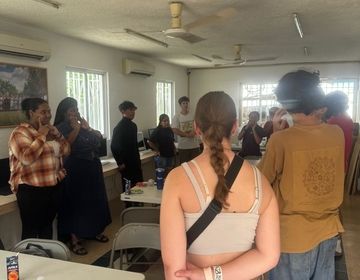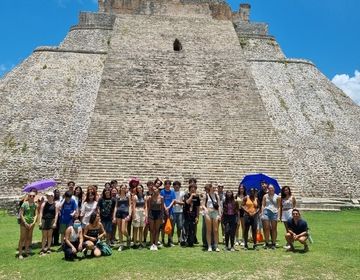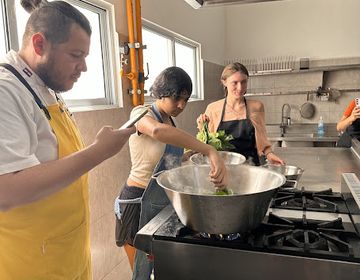Chévere Chichén Itzá

At night, students had the special privilege of seeing history come alive with the Chichén Itzá light show. The history of the Mayab - or Mayan ancestral land - was narrated and accompanied by artistic images projected onto the pyramids.
Our tour of Chichén Itzá during the daylight was just as impressive as our time at night. Our guide explained the significance of the ancient Mayan ball game called pitz that seamlessly intertwined with their cosmology and belief system. The winner of the game - or the loser, depending on who you’re asking - was sacrificed to the gods.
Anthropologists generally agree on a rough translation of Chichén Itzá as “people of the water” or “people of the sinkholes.” It was only fitting that we visit a cenote, or sinkhole, since the ancient Mayans saw them as sacred and revered them for their connection to the underworld. Students enjoyed swimming in the sacred waters and practicing their Spanish with fellow cenote visitors.
On the way back to Mérida, we took advantage of the Yucatán’s cultural diversity and stopped in Izamal, known as the “yellow city,” to have dinner at a hacienda. Students rested under the palm trees and sipped agua de jamaica before heading back to their home stays, where they were welcomed by their host families.
We’re rested and ready for another exciting week in Mérida!
¡Nos hablamos pronto!
- Jennifer



Related Posts
Hacienda Yaxcopoil and Community Conversations
On Monday, students traveled to Hacienda Yaxcopoil to learn about the production of henequén, which is used to make products such as ropes, bags, and other crafts. Although henequén was... keep reading
Uxmal and ChocoStory Museum
This week, our students traveled to the archeological site of Uxmal, where they saw buildings and pyramids from the Mayan civilization. They also learned about the legend of Uxmal, in... keep reading
Service and Leadership Takes on Yucatecan Cuisine
In addition to their daily workshops and service in the community, students in the Service and Leadership program also participate in cultural activities each afternoon. These activities allow them to... keep reading



